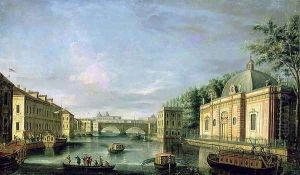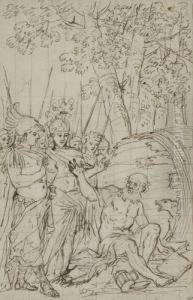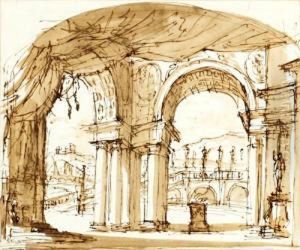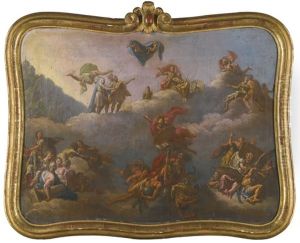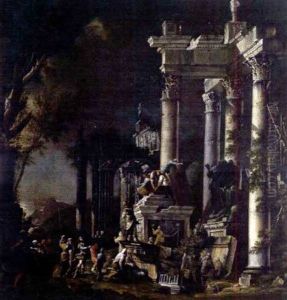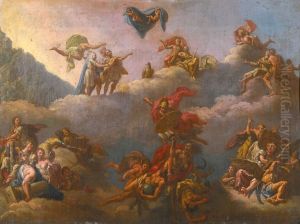Giuseppe Valeriani Paintings
Giuseppe Valeriani was an Italian painter and architect who was born in 1520. Often less known than many of his contemporaries, Valeriani worked during the Renaissance period, a time of significant artistic and cultural change in Europe. His contributions, although not as widely recognized as those of titanic figures like Leonardo da Vinci or Michelangelo, still hold a place in the history of art and architecture.
Valeriani is often recalled for his expertise in quadratura, a form of trompe-l'œil that uses the technique of perspective to extend architecture through illusionistic painting on ceilings and walls. This technique was particularly popular during the Baroque period, and Valeriani's work predates and perhaps influenced the Baroque fascination with blending architecture, painting, and perspective to manipulate space.
During his career, Valeriani worked on various projects, including designing stage sets and creating intricate frescoes in palaces and churches. His work would have been characterized by the elaborate details and deep understanding of perspective that were hallmarks of the Renaissance style. Valeriani's artistry contributed to the ornate interiors that were favored by the wealthy and the church at the time.
The records of Valeriani's life and works are not as extensive as those of some of his peers, resulting in a less comprehensive understanding of his full influence and contributions. Nonetheless, it is known that his work was appreciated in his time, and he was commissioned by notable patrons, which attests to his skill and reputation. Valeriani passed away in 1602, leaving behind a legacy that is appreciated by those with a deep interest in Renaissance and Mannerist art.
Unfortunately, due to the scarcity of information, much of Giuseppe Valeriani's life and oeuvre remain under-researched. Art historians continue to study artists like Valeriani to better understand the complexities and interconnectedness of Renaissance artists and their influence on the periods that followed.
